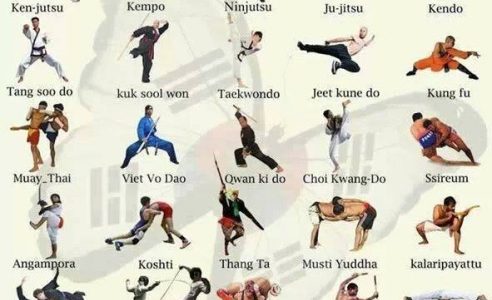Introducing The Selection Of Martial Arts Disciplines: A Guide From Karate To Taekwondo
Introducing The Selection Of Martial Arts Disciplines: A Guide From Karate To Taekwondo
Blog Article
Web Content Create By-Stender Joseph
Are you tired of feeling bewildered by the substantial world of fighting styles? With a lot of designs to select from, it can be very easy to obtain shed in a sea of strikes, kicks, and mystical names. Yet anxiety not!
This conversation will debunk the different martial arts styles, taking you on a journey from the powerful strikes of Karate to the dynamic kicks of Taekwondo. Prepare to reveal the beginnings, strategies, and philosophies behind these ancient art types.
So, tighten your belt and prepare to embark on an enlightening exploration right into the fascinating world of fighting styles.
Origins of Martial Arts Styles
The origins of fighting styles designs can be mapped back to old civilizations and their demand for protection and combat methods. Throughout history, different societies developed their very own distinct approaches of fighting, each with its own set of methods and approaches.
In China, for example, martial arts styles such as Kung Fu and Tai Chi were created as a means of protection and boosting physical and mental well-being.
In Japan, the samurai warriors developed designs like Karate and Judo, focusing on self-control, accuracy, and mastery of the body.
In a similar way, in Korea, Taekwondo became a fighting style stressing high kicks, quick motions, and psychological perseverance.
These very early people laid the foundation for the varied selection of fighting styles styles that exist today, each with its very own abundant history and social significance.
Methods and Training Techniques
To master fighting styles styles, specialists need to discover numerous techniques and training approaches.
Techniques are the specific motions and activities used in fight, such as strikes, kicks, tosses, and blocks. Various fighting styles designs have their own special collection of strategies that specialists have to grasp via rigorous training.
Training approaches differ depending upon the design, yet they normally entail a combination of physical conditioning, drills, sparring, and kinds.
Physical fitness is critical to build strength, adaptability, and endurance. https://www.timesnewspapers.com/webster-kirkwoodtimes/self-defense-leads-to-self-confidence/article_7ff3964a-f2fc-11ec-8b69-c322c4526dc6.html assist professionals improve their methods and enhance their speed and accuracy.
Competing enables practitioners to exercise their strategies in a managed, sensible atmosphere. Kinds, also referred to as kata, are prearranged sequences of motions that assist experts establish muscle mass memory and emphasis.
Viewpoints and Principles
Exploring the philosophies and principles of martial arts designs can provide you with a deeper understanding of your chosen discipline. Each fighting style has its very own special philosophy and set of leading concepts that form the way it's exercised.
As martial arts gym near me , Martial arts stresses technique, respect, and self-discipline. It teaches experts to concentrate their body and minds, enabling them to protect themselves while maintaining a sense of internal tranquility.
On the other hand, Taekwondo places a strong focus on speed, agility, and adaptability. Its principles are rooted in the tenets of politeness, honesty, perseverance, self-control, and resolute spirit.
Verdict
Now that you have actually discovered the beginnings, techniques, and ideologies of different martial arts styles, you have a deeper understanding of these ancient techniques.
Visualize martial arts classes for beginner adults , exercising with steady determination and emphasis, breaking through boards with a powerful strike.
Their trip showcases the commitment and strength required to grasp a fighting style, advising us that with technique and determination, anything is feasible.
